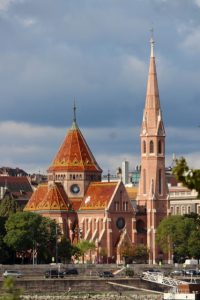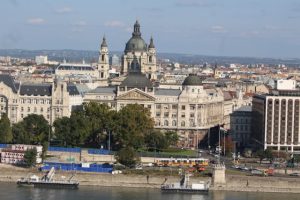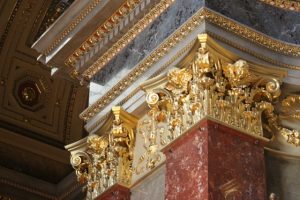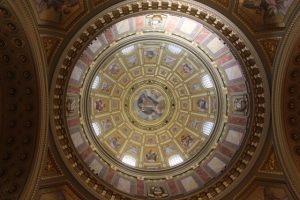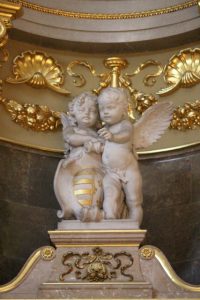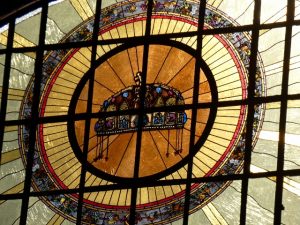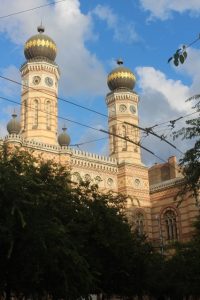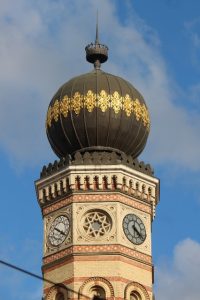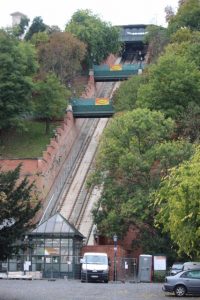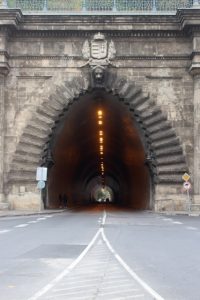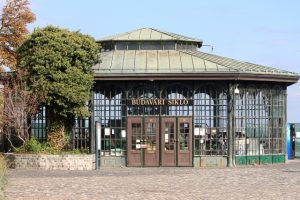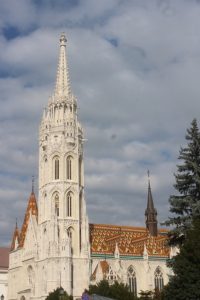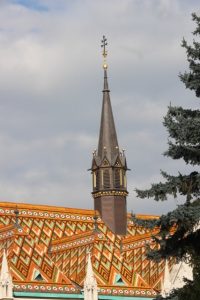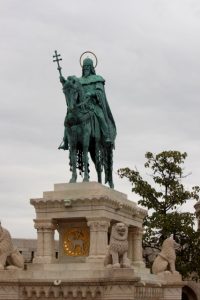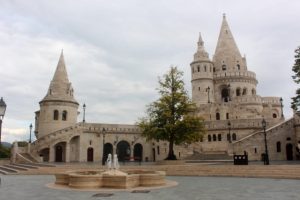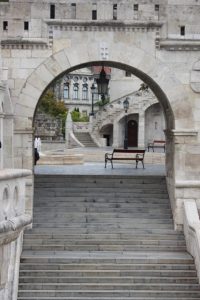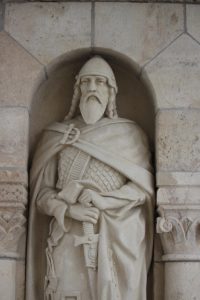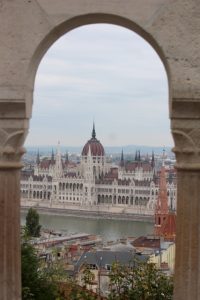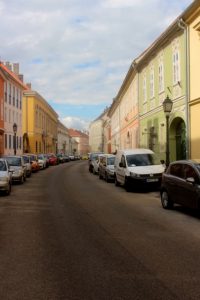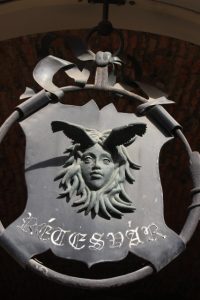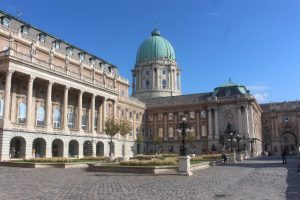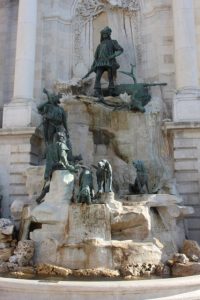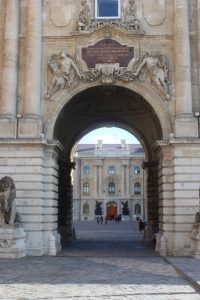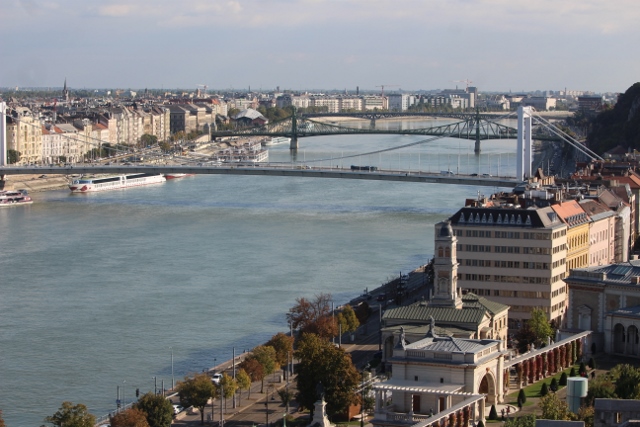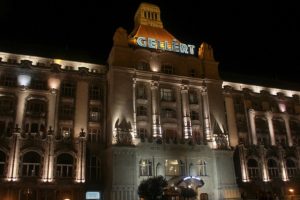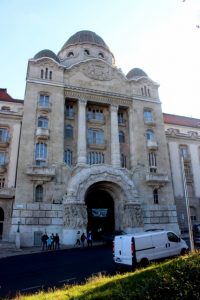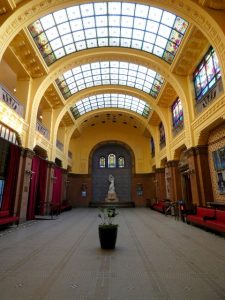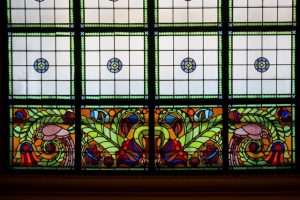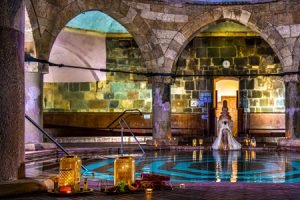The last entry on Budapest explores the Buda-side of the city, with its churches and its castle, all heavily restored, and with its unique bath houses.
We finally make it to Buda, the city part on the western side of the Danube. But before that, we need to finish the Pest-side of things; I am sure you have been wondering, all along, what has happened to the churches? Are there no churches in Budapest?
Well, there are, but we are experiencing a little saturation with churches, after having seen so many already on this trip. We do, however, enter Budapest’s main cathedral, the one of Saint Istzvan, or Stephen, in English. Two reasons, really, one is to see the cathedral inside, and second is to get to the top of the tower. The inside is richly decorated, with mosaics, marble, sculptures. All not very old, for church standards: the cathedral was completed in 1905 only, with major delays, amongst others because the dome once collapsed during construction. Going up the tower is a very civilised affair. Where we have been climbing the stairs on several earlier occasions, the cathedral has two lifts, which connect at the so-called panorama deck, and bring you almost to the top, leaving perhaps 20 or 30 steps to the outside viewing gallery at the base of the dome. From which you have a great view over Budapest!
The other religious building in Budapest that deserves attention – which it didn’t get from us, we bypassed without getting inside, regrets! – is the great Dohany Utca Synagogue, the largest in Europe, and the second largest in the world. Which illustrates how import the Jewish population was in the 19th Century, when the synagogue was built.
Right, the other side of the river then. The main attraction here is the castle district, with yet another castle perched high on a hill. Once again life is made easy, because to get to the castle there is a funicular, operating since 1870. Well, except that when we want to use it, it is temporarily closed. Of course. So we hike up, first to the Matthias Church, in fact a not-so-strenuous climb after all.
The problem with the Castle District is that at the end of WWII the hill, with all what was on it, was ravaged by the Red Army and the Nazis battling over Budapest. Somebody has established that this was the 86th time that the hill was ravaged in seven centuries – think Mongols, thing Ottomans -, but obviously, there are gradations: apparently, the last destructions rivals that of what the Christian armies did when they re-took the city from the Ottomans. Not much was left standing. Which means that whatever we see today has been restored after 1945.
The church, like many other churches in Budapest, has brightly coloured roof tiles, by which it stands out against the grey clouds. Its structure is gothic-like, which is enhanced by one black-coloured spire, amongst the many reddish-tiled and white-stuccoed ones. The square in front of the church derives its name from the Holy Trinity column, originally erected in 1713 as thanksgiving for the abatement of the plague, a practice we have seen in many places, also in the Czech Republic last year. I wonder how many Corona Columns are going up in the years to come, perhaps society has changed in the last 300 years.
On the river side the square is bordered by what is called the Fisherman’s Bastion. There is some historical evidence, or speculation, that fishermen indeed defended this part of the hill in the Middle Ages, but I don’t think that has anything to do with the present-day structure, once again post-1945, and made to please the eye, not the defenders. And that is exactly what bothers me, a bit, that lack of originality. Obviously, it only bothers me, not the selfie-taking crowds that vie for a spot with the Danube in the back. So far we hadn’t noticed, really, but here on the hill there are suddenly a lot of tourists. There is a queue for entering the church; we skip it.
Instead we take a walk to the far end, the northern part of the hill. Where far fewer tourists come. There are a few more museums, there is the National Archives, but really, nicest are the narrow cobbled streets, with pastel-coloured houses, so here and there trees in autumn shades. And the walk along the other side of the hill, without Danube view, but tree-lined, and very pleasant in the sun which has started to appear occasionally.
At the other end of the hill is the castle. It is not really a castle, more a palace. Subsequent powerbrokers have established themselves here, easy to defend, or so they said – which sits uncomfortably with the statistic of 86 ravages in 700 years, but never mind. The palace, equally restored, is a statement of opulence, but at least it is in good company, in Budapest. I think all of this comes together in the statue representing a hunting scene. No battle, no hero, no, a hunting scene, symbol of decadence. Another sculpture shows a man next to a horse. Next to a horse, not on top? Am I missing something? Much of the palace is in scaffolding, being repaired a little more. Much of it is closed, too.
But from the side of the palace we have nice views over the river, again. And it helps that the sun is shining, otherwise it would have been a drab affair.
The last thing to do in Budapest – some would say, the first – is to visit one of the spas. There are several, but the most famous one is the Gellart Bath, part of the hotel of the same name. This is another extremely expressive Art Nouveau building, from the outside and even more so inside, with a large entrance hall, lots of tiles, and stained glass windows and roof. We have a look inside, yet, we decide against it, because as so many of the spas, most of the time they are single-sex only, with different opening times for men and women. So we find another spa, the Rudas Bath, a remnant from the Ottoman occupation and originally built in the 16th Century. Great place, with an octagonal pool under a dome, and side pools with different temperature water, from 28 to 42 degrees. Unfortunately, no cameras or phones allowed inside, and for once I obeyed. Regrettably, of course. (To give you an impression, here is one picture form the website of the spa – except that on Friday afternoons, it is a lot busier.)
And that completes our few days Budapest. Well, almost. There is also the improbable Memento Park.
